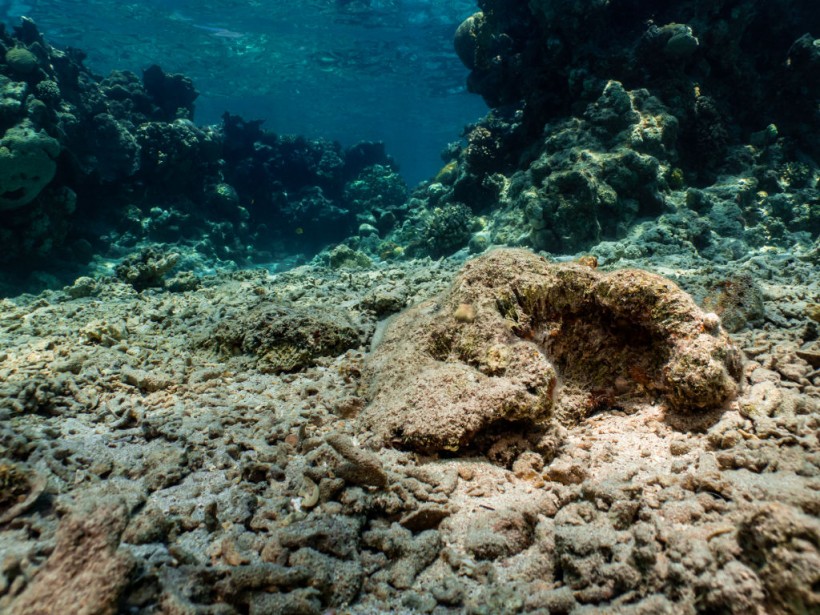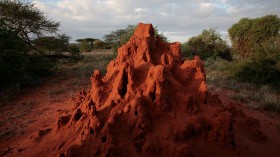Kaikōura is a coastal town on the South Island of New Zealand, famous for its marine wildlife and scenic landscapes. However, in November 2016, Kaikōura was hit by a powerful earthquake that caused widespread damage and disruption.
The earthquake also triggered a massive underwater landslide that reshaped the seafloor and buried the rich and diverse benthic (bottom-dwelling) communities in the Kaikōura Canyon.
Kaikōura Canyon: a hotspot of Biodiversity
 (Photo : Lukasz Larsson Warzecha/Getty Images)
(Photo : Lukasz Larsson Warzecha/Getty Images)

The Kaikōura Canyon is a submarine canyon that cuts across the continental shelf and slopes off the east coast of the South Island.
It is part of the Hikurangi Marine Reserve, New Zealand's only deep-sea marine reserve.
The canyon is about 60 km long, 2 km wide, and up to 1.2 km deep. It is connected to a network of channels that extend along the Hikurangi Margin, as per Phys.org.
The Kaikōura Canyon is one of the most biologically productive deep-seabed environments on the planet.
It supports a high diversity and abundance of benthic organisms, such as sponges, corals, anemones, worms, crustaceans, mollusks, echinoderms, fish, and mammals. These organisms feed on organic matter that sinks from the surface waters or is transported by currents from the nearby coast.
The Kaikōura Canyon is also important for pelagic (open-water) organisms, such as whales, dolphins, seals, seabirds, and sharks.
These organisms visit the canyon to feed on the abundant prey or to communicate with each other. The canyon acts as a natural amplifier for sound waves, which can travel long distances in the water
The Kaikōura Canyon is a hotspot of biodiversity and ecosystem services, providing food, habitat, carbon storage, and cultural values for humans and other animals.
Earthquake impact: a catastrophic disturbance
On November 14, 2016, a magnitude 7.8 earthquake struck near Kaikōura, causing severe damage to buildings, roads, railways, and infrastructure, as per WN.com.
The earthquake also generated strong ground shaking and uplift along the coast, triggering landslides on land and underwater.
One of the largest underwater landslides occurred at the head of the Kaikōura Canyon, where about 850 million tonnes of sediment were mobilized by the earthquake.
The sediment formed a turbidity current, a fast-moving flow of water and sediment that traveled along the canyon floor at speeds of up to 20 m/s (72 km/h).
The turbidity current scoured and buried the benthic communities in its path, leaving behind a smooth and barren seafloor.
The turbidity current also affected the water quality and chemistry in the canyon. It increased the turbidity (cloudiness) and reduced the oxygen levels in the water column. It also released nutrients and carbon from the sediment into the water column.
The earthquake impact was a catastrophic disturbance for the deep seabed in the Kaikōura Canyon. It resulted in a loss of biodiversity and ecosystem function, as well as a change in environmental conditions.
Also Read: A Moo For Help: Earthquake in New Zealand Leaves 3 Cows Stranded
Recovery process: a remarkable resilience
Since the earthquake, scientists from NIWA have been monitoring the recovery of the deep seabed in the Kaikōura Canyon using various methods and technologies.
They have collected seafloor images using cameras mounted on remotely operated vehicles (ROVs) or towed sleds.
They have also collected sediment samples using corers or grabs. They have analyzed these data to assess the changes in benthic community composition, abundance, and diversity over time.
The results show that the deep seabed in the Kaikōura Canyon is rapidly recovering from the earthquake's impact. Within weeks after the earthquake, some benthic organisms started to recolonize the seafloor, such as fish and sea cucumbers.
Within months after the earthquake, there was a notable increase in some benthic taxa, such as polychaete worms and brittle stars.
Within four years after the earthquake, some parts of the seafloor appeared similar to their pre-disturbance state
- The recovery process is driven by several factors, such as
- The availability of larval supply from nearby or distant sources
- The ability of some organisms to survive or resist burial by sediment
- The ability of some organisms to adapt or tolerate changes in environmental conditions
- The interactions among different organisms that facilitate or inhibit colonization
- The variability of natural disturbances that create or remove habitat patches
The recovery process is also influenced by the spatial and temporal heterogeneity of the disturbance and the recovery.
Different parts of the canyon were affected differently by the turbidity current, depending on their depth, slope, and distance from the source.
Different parts of the canyon also recovered differently, depending on their location, connectivity, and history. The recovery process is not linear or uniform, but rather dynamic and complex.
The recovery process demonstrates the remarkable resilience of the deep seabed in the Kaikōura Canyon.
It suggests that the benthic communities have a high capacity to cope with or recover from large-scale disturbances.
It also suggests that the canyon has high ecological stability and integrity, which are important for its conservation and management.
Related article: Biggest California Earthquake in 2 Decades Ruptures 24 New Faults
© 2024 NatureWorldNews.com All rights reserved. Do not reproduce without permission.





